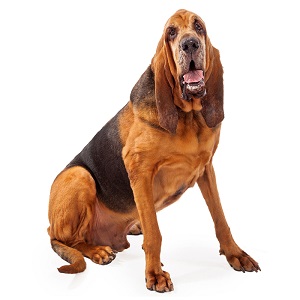Bloodhound Shedding Level
Wanting to get a Bloodhound and need to know how bad is Bloodhound shedding level and how hard it is to control the shedding of Bloodhound Dogs?
According to dog experts, Bloodhounds score  out of 5 in the scale of breeds that are considered the less shedding dog breeds.
out of 5 in the scale of breeds that are considered the less shedding dog breeds.
Do Bloodhound Dogs Shed A Lot?
-
Moderate and Seasonal Shedding: Expect this dog to shed regularly. Be prepared to vacuum often. Brushing will reduce shedding as well as make the coat softer and cleaner.
Non-shedding as well as hypoallergenic pet dogs seem to be more prominent than ever. With dog allergies so common, numerous animal enthusiasts are looking for hypoallergenic pet dog breeds - in some cases paying thousands of dollars to get them.
Still others are going hypoallergenic for the hair, or absence of it. Dog shedding is a big issue for numerous family pet proprietors, however it's one more strike off the listing for proprietors of hypoallergenic pet breeds.
The term 'non-shedding canine' is a little bit of a misnomer as actually all dogs dropped to some degree.
On the silver lining, there are some breeds that lost only really little hair and may consequently be better matched to allergic reaction victims and people who like it neat.
If you are in the look for a hypoallergenic type, here is a list for you to check out prior to you go as well as begin stockpiling on supplies.
While no dog is genuinely hypoallergenic as all canines shed some allergens, there are some breeds that are understood to be far better for allergy-sufferers.
These exact same dogs that don't drop might simply have you do away with the dust roller completely.
10 Dog Breeds That Don't Shed
What to do if you lose your Bloodhound
If your Bloodhound Dog or any other pet has gone missing and it does not have an identification tag with a phone number, you can:
1. List your missing pet details at Pet Reunite website here.
2. Report the missing pet on the Local Facebook Lost Pets Groups Here.
3. Visit the local vets to see if anyone has brought in your lost pet.
4. Call the RSPCA or Visit the RSPCA Lost Pets website and complete a Lost Pet Report.
5. Visit Lost Pets Pages of Animal Shelters.
What to do if you find a lost Bloodhound
If you find a Bloodhound Dog or any other pet and it does not have an identification tag with a phone number, you can:
1. Register the found pet details at Pet Reunite website here.
2. List the missing pet on the Local Facebook Lost Pets Groups.
3. Phone the Local Council to collect the lost animal.
4. Take the animal to the local Animal Shelter near to your area.
5. Take the animal to the local Vet Clinic who usually scan the animal’s microchip and phone the registered owner of the pet.
Laws Regarding Missing Pets
1. It is against the law to keep any animal that you find.
2. Pets are generally considered property and it is illegal to take and keep someone else’s property.
3. You must call your local animal control unit and file a FOUND AN ANIMAL report for any dog or cat you find.
4. To reclaim your lost dog, cat or other pet from the animal shelter you must pay a release fee.
5. If your dog or cat is unregistered, you will have to register your pet before you can take it home.

